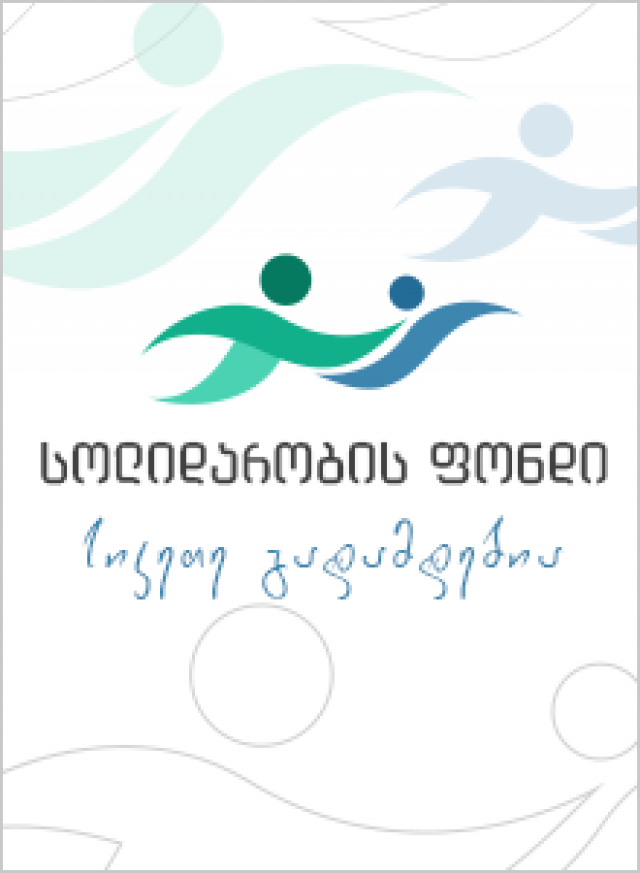Initial Environmental Examination (IEE) document for Section 3 of Modernization of Tbilisi-Rustavi Urban Road project
Background
The Government of Georgia signed a loan agreement of USD 85 million with the Asian Development Bank (ADB) under a MFF to implement the Sustainable Urban Transport Investment Program-Project-1. The modernization of road section-3 of 6.1 km from Phonichalato Rustavi forms a part of Tbilisi-Rustavi Highway with a total length of 17.1 km is one of the components /sub-projects identified for reconstruction. The Municipal Development Fund of Georgia (MDFG) is the project executing, implementing and disbursing agency. The MDFG is the Employer and acts on behalf of the municipality and the Road Department of Georgia. The objective of the Project is to develop an efficient, affordable, and environmentally sustainable transportation system that forms a part of the south-east route of the country.
The project will focus on the improvement of the existing transport services linking Rustavi to Tbilisi. The Project targeted measures and specific facilities such as provision of interchanges, road widening, bus stops, road marking, footbridge or underpass included to ensure a quick, safe and reliable bus services and guarantee proper physical connection with metro network at the entrance of the city. The Program was developed as the Government’s response to the transportation problems in urban areas, which include large traffic volumes between Tbilisi and Rustavi route causing increasing delays, as a result of previous under-investment in infrastructure maintenance and expansion.
Objectives
This Initial Environmental Examination (IEE) has been prepared for Section-3, as part of the ADB supports (ADB Loan 2655-GEO) in undertaking the feasibility/design of the Engineering, Procurement, Construction Management and Supervision of the overall Modernization of Tbilisi-Rustavi Section of the Tbilisi-Red Bridge (Azerbaijani Border) Road of 17.1 km. The objective of the study is to help the Government prepare and implement an efficient, safe and sustainable transport network, in accordance with international environmental safeguards.
In addition, the IEE aims to identify the likely impacts, both positive and negative and assess the impacts on the environment of the proposed intervention undertaken by the MDF. The basic objective is to ensure that nobody is made worse off as a result of such development. The overall aim is to ensure that the proposed project is environmentally sound and sustainable following the international requirements laid out in United Nations Framework Convention on Climate Change to which Georgia is a signatory (Ref: Short List of the Ratified Conventions in Section 1.2.4 of Volume-II).
Methodology for IEE
This IEE follows the methodology outlined in the ADB Guidelines; ADB Safeguard Policy Statement, June 2009 (SPS 2009) and environmental Laws of the Government of Georgia. The experiences of other studies in preparing IEE documentation for transport sector have also been reviewed. This IEE is prepared based on review of detailed design, collection of primary, secondary data and information, field visit, discussions with the MDF and Environment Department, and stakeholder consultations.
This report covers the description of existing environmental conditions, assessment of environmental impacts of proposed road project, recommended management and mitigation measures and monitoring of selected parameters. The environmental impact was considered for activities during pre-construction, construction and operation phases of the Project. The scope of the IEE covers the natural and human environment, their interaction and any induced change brought about by the road construction/reconstruction activities.
Further, various environmental activities were carried out at the project feasibility and planning stages. Sector experts conducted both office studies and field investigations and on-site assessment of the environmental condition. A full set of the required environmental and social information has been collected. The National Environmental Agency took samples of surface water, soil and ambient air and analyzed them. The design team checked the background noise and radiation along the entire alignment for the proposed route. Emission impacts of the traffic were analyzed using licensed software “Ecolog – Magistral”.
Sensitive environmental and social receptors were analyzed in the project area and the results of the analysis were considered in design and planning of mitigation measures. The land acquisition and resettlement issues are submitted as a separate document – Resettlement Action Plan. Mitigation measures were integrated within the Environmental Management and Monitoring Plan
The IEE document is structured as main text and annexes. The main body of the text provides concise and logical description of the environmental condition, sensitive receptors, potential environmental impacts and relevant mitigation measures, integrated in the Environmental Management Plan (EMP). The annexes provide more detailed information regarding particular issues, like: the report of the he National Environmental Agency on the environmental pollution (water, soil and ambient air), the results of traffic pollution modeling.
However, the data from the following disciplines were also reviewed and incorporated in to the IEE study.
· Engineering
· Hydrology
· Ground water
· Public Health
· Land Acquisition and Resettlement
IEE Tbilisi-Rustavi Road Section III - ADB-SUTIP



